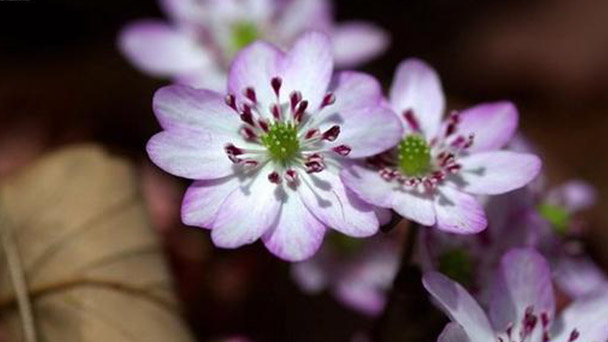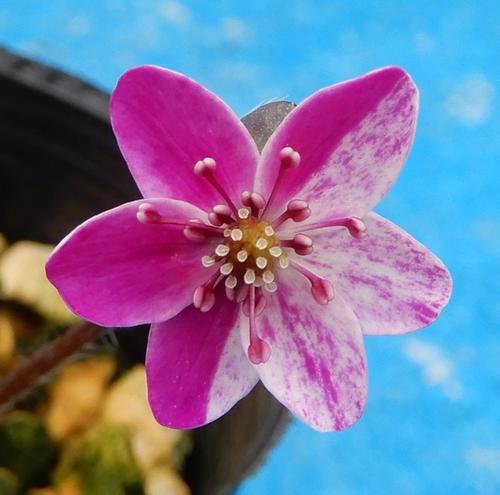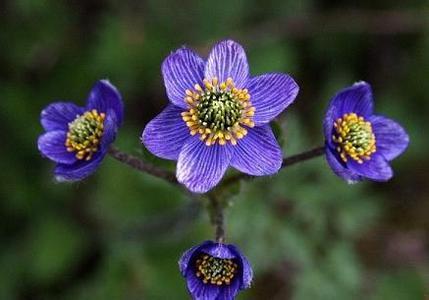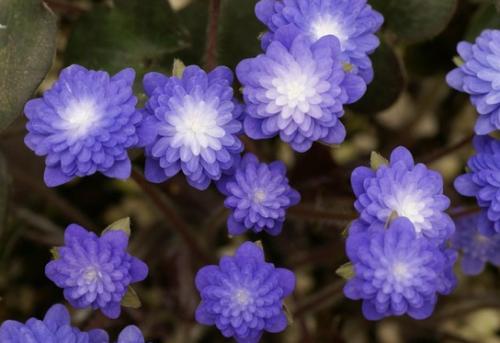Hepatica profile
Written by Maggie
Mar 16 2021

In cold winter, on endless fields of snow, a type of small white flower growing Hepatica. When winter snow and spring melt, they will fade. Hepatica is not to be appreciated, it is for their own growth and tenacious. Although Hepatica is a cluster of clusters, each branch is an individual against the cold. No gorgeous posture is not inferior to the plum blossom. It's not very impressive, but it's impressive. This is the life of nature.
Hepatica picture

Morphological characteristics of Hepatica
Rhizome
Hepatica is perennial herbs, 8-18cm tall. The rhizome is short, densely fibrous roots.
Leaf
Hepatica has 3-6 Acrylic cell line; Petiole is 6 -- 9cm long, sometimes hairy, glabrescent glabrous; Leaf blade is Serotis equinortate broadly ovate, 2.5 -- 6.5cm long, 4.5 -- 73.5cm wide, base deeply cordate, 3-lobed to 1-6 scape, villous; Hepatica has 3 bracts, ovate or ellipsoid, 7 -- 12 x 3 -- 6mm, apex acute or obtuse, entire, slightly densely pubescent below;
Flowers
Flowers of Hepatica are bisexual, solitary at top of scapes; Hepatica has 6-11 sepals, petalite, narrowly oblong, 8 -- 14 x 3 -- 6mm, apically obtuse, pink or violet; Stamens are numerous, 2-6mm long, filaments narrowly linear, anthers elliptic, about 0.7mm long; Carpel many, ovary densely pubescent, style short.
Fruit
Achenes of Hepatica are ovoid, ca. 4mm long, with pilose and short persistent styles
Eco-habits of Hepatica
Hepatica likes cold climates and cool air. It is suitable for cultivation in non - tropical areas. There is no strict requirement for air humidity. It is good to be wet, but it does not matter if it is a little dry.
The distribution area of Hepatica
In Japan, where Hepatica is known as cherry blossoms, and where the export of Hepatica is not permitted, Hepatica is rare.
Main producing area: Hokkaido.
How to grow and care for Hepatica
Soil
Hepatica is commonly raised in well-drained soil and also has a certain moisturizing effect. The potting soil is usually made from one portion of sun sand and one portion of deer marsh soil. A quarter of the light stone is added, and the soil is thoroughly mixed, and the fine dust is sifted out. The substrate turns white as it dries, making it easier to control the timing of watering.
Lighting
Different seasons have different lighting needs. For example, the need for more sunshine in spring, in order to promote the differentiation of flower buds, but at noon to pay attention to shade, so as not to be sunburned. Wait until the summer and fall, it needs to be moved to a shady place, to avoid continued exposure to light. Winter should be placed bright, help to improve the ambient temperature.
Watering
Growth of Hepatica requires adequate water, which is needed in time after the dry topsoil. It should be noted that watering in the flowering period can not be poured on the flowers, must be poured on the base. In summer, the temperature is higher, watering at noon is easy to lead to a drop in ground temperature, generally in the evening to re-watering.
Fertilization
Basic fertilizers, commonly used with slow-release fertilizers, are used to provide continuous nourishing. After transplanting, topdressing can be appropriate. Generally, solid fertilizer can be applied twice in spring and autumn. Nitrogen fertilizer should be added during the growth of leaves, and high phosphate fertilizer should be applied during flower bud formation.

How to propagate Hepatica
Hepatica propagation is generally performed by seeding or plant division. Sowing time in the spring generally needs a year to take root, the root will sprout and grow cotyledons, two years can grow true leaves, and a bud, until the third year will bloom. Planting is usually carried out in May. After the plants are taken off the pot, the seeds can be separated and planted, which is relatively simple and convenient.
Hepatica uses
Medicinal value
Invigorating blood and dispelling wind; Insecticide and antipruritic.
Common uses of landscaping
Hepatica can be used for ground cover and pot cultivation.

Latest Updated
- Benefits of Bugleweed - 7 Science-backed Health Benefits
- Bugleweed Dangers & Side Effects - Is It Poisonous?
- How to Plant Evergreen Trees - What You Should Know
- When to Plant Evergreens - Grow Guide for Evergreen Trees
- 12 Wonderful Evergreen Shrubs for Your Garden
- 12 Popular Evergreen Plants with Pictures for Beginners
- When And How To Prune A Lilac Bush Like a Pro
- How to Grow & Care for Lilac Vine (Hardenbergia Violacea)
- Japanese Lilac Tree (Syringa Reticulata) Care & Propagation Guide
- Shumard Oak Pros and Cons - What to Know
Popular Articles
- Winter maintenance of Antirrhinum Majus
- How to Grow Terminalia Mantaly Tree
- How to Grow and Care for Crossostephium Chinense
- How to grow Antirrhinum Majus in spring
- Peristeria Elata (Dove Orchid) Profile: Info & Care Guide
- Underwatered Snake Plant (Sansevieria Trifasciata) - Signs And How To Fix
- How to Care for Brazilian Jasmine Plant (Mandevilla Sanderi)
- How to Grow & Care for Graptopetalum Purple Delight in Summer
- Rosa Chinensis (China Rose): Plant Growing & Care Tips
- How to Care for Baby Sun Rose (Aptenia Cordifolia)